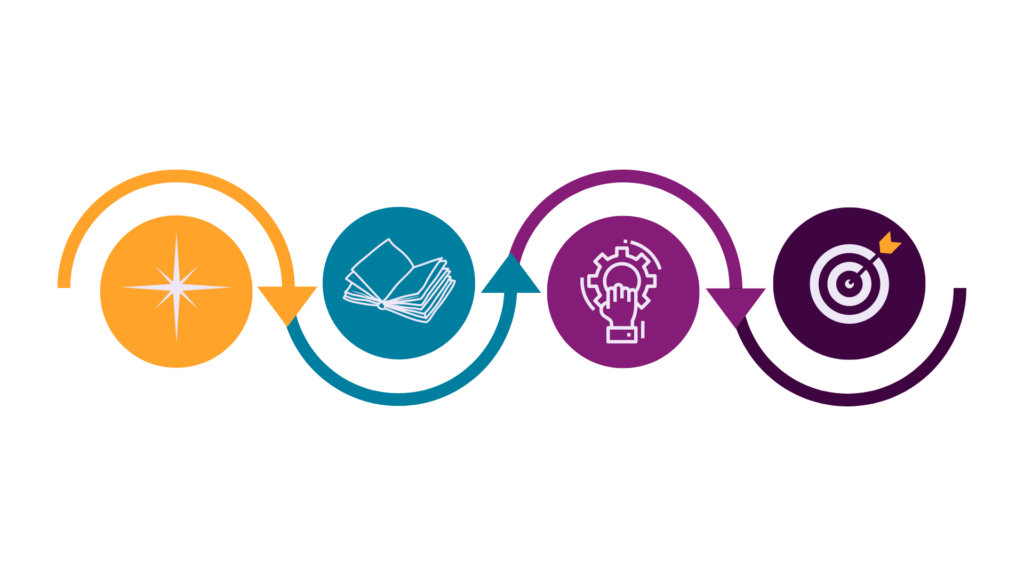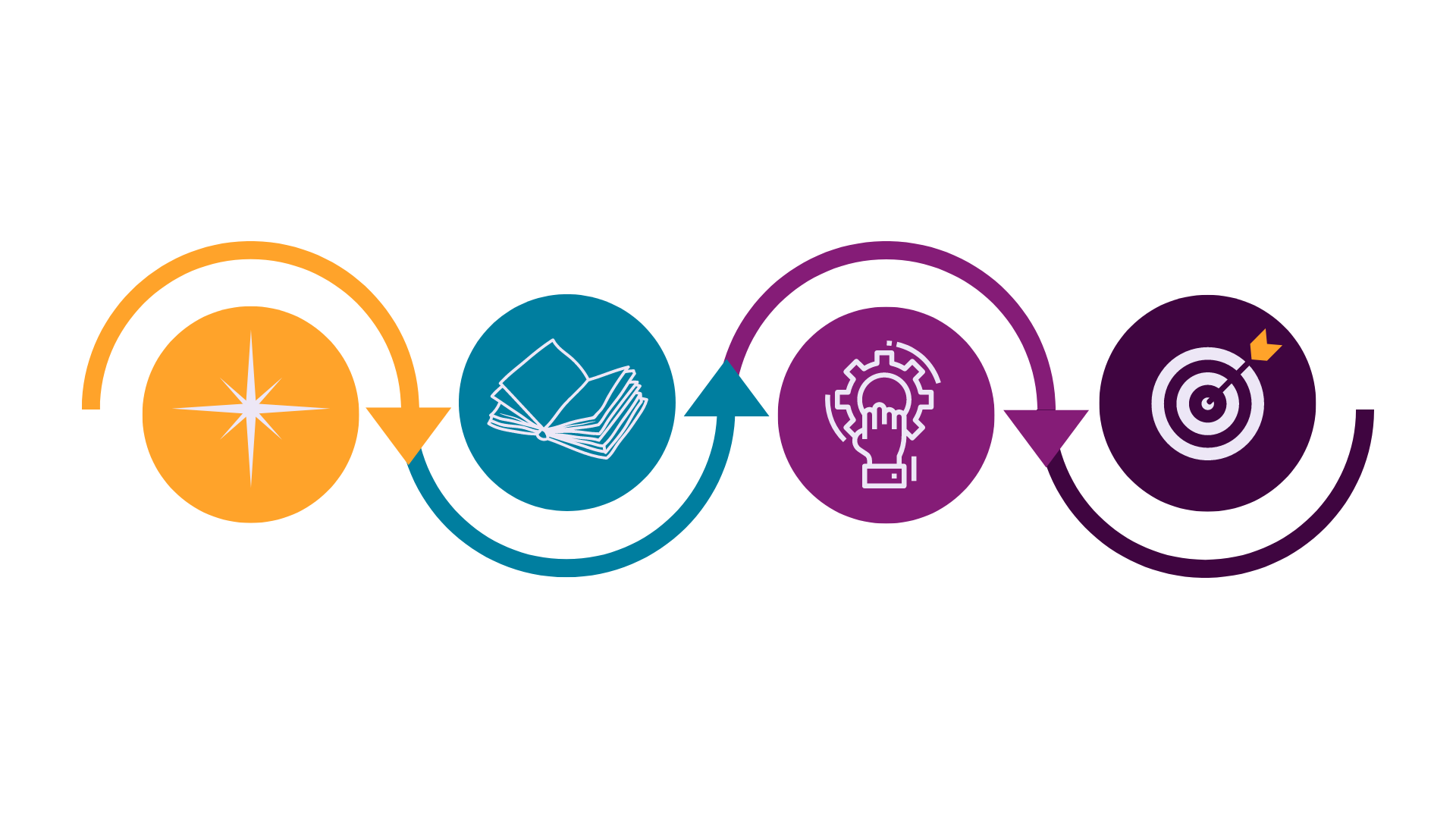Ding-dong! The email landed in my client Will’s inbox. Reading through it, his breath quickens, his jaw clenches, and he gets that tingly feeling in his gut.
He’s freaking out over this email from his biggest client…let’s be honest, haven’t we all freaked out over an email?

Will starts saying these things to himself:
She doesn’t think much of me because I don’t have a Ph.D. She thinks I’m stupid. And really, I was just being considerate — and she doesn’t even care. I made it so easy for her, and she’s just ignoring all the work I did to help her.
He feels intimidated and small because his work was unappreciated.
Communication stopped, and resentment began.
Does this pain feel familiar? Unfortunately, you probably see yourself too well in Will’s story. And the stories he was telling himself.
Last week, we talked about how great leadership begins with the stories you tell yourself because your stories determine your actions which determine your results. (If missed it, read the full article here.)
The process of identifying your stories includes understanding your personality, or the lens that filters the way you see the world.
Sometimes you’ll hear it called personality, other times ego or psyche. But it’s our brain’s shortcut for creating stories quickly. Why create a new meaning every time, when I can rely on the old meaning that kept me safe before? That’s your personality story.
To change your results, you have to know the story that’s motivating you. This is why I love using the Enneagram personality framework. The nine personality types are rooted in a narrative that motivates how you think, feel, and act every day. (It’s so important it’s one of the pillars of the Joyosity Retreat for Leaders.)
The tricky part is the personality story that is trying to keep you safe is often a lie you live in like it’s gospel truth. And when you don’t identify it, it wreaks havoc like Dwight driving the work bus.

Your leadership success — and really every relationship you have and result you want — depends on you seeing a new story.
Since your brain loves shortcuts, I’m sharing my effective shortcuts with you. First, how to tell when you’re living in the unhelpful story of your personality, and then, the unhelpful short story each personality type lives in and a new story to replace it with.
What it looks like when you’re in an unhelpful story
You feel like you’re in middle school. You get a twingy feeling in your belly, or maybe your jaw tingles, and you have that awkward sensation in your gut. Possibly you overreact or are in shock that anyone would behave that way.

Those are clues you’re living in an unhelpful or even unhealthy story.
Identify the old and replace it with the new
Your personality has an image of itself it wants you to maintain by telling you an old, unhelpful story. Now, as you read through the list, you’re gonna recognize all of these stories. You have probably experienced them at one time or another. But look for the one you experience the most often. Pay attention to the one that is a tiny (or maybe not so tiny) gut punch.
Enneagram Eight Old Story: I have to be strong because it’s not ok to trust anyone.
Enneagram Eight New Story: It’s ok to show vulnerability and let others be the strong one. I can trust others not to betray me.
Enneagram Nine Old Story: I have to be harmonious and comfortable because it’s not ok to assert myself.
Enneagram Nine New Story: It’s ok to stand up for mysef and work through conflict. My presence matters.
Enneagram One Old Story: I have to be right to be good because it’s not ok to make mistakes.
Enneagram One New Story: Perfection is a myth. I can be a good person and make mistakes. I don’t have to fix the world.
Enneagram Two Old Story: I have to be a helpful person because it’s not ok to have my own needs.
Enneagram Two New Story: Being human means having needs. I do not have to earn love and worth by denying myself to do things for others.
Enneagram Three Old Story: I cannot fail and must be successful in others’ eyes because it’s not ok to have my own identity.
Enneagram Three Old Story: I am a human being not a human doing. I can have my own authentic identity that I choose.
Enneagram Four Old Story: I have to be unique and authentic to me because it’s not ok to be not enough or too much for others.
Enneagram Four New Story: It’s OK for me to be functional and happy. I can be unique without being too much.
Enneagram Five Old Story: I have to be competent and knowledgeable because it’s not ok to let my guard down and be too comfortable.
Enneagram Five New Story: I don’t have to know everything. It’s ok to be comfortable and experience the unknown.
Enneagram Six Old Story: I have to be loyal and prepared because it’s not ok to trust myself.
Enneagram Six New Story: I can trust myself. I make good decisions and can keep myself safe.
Enneagram Seven Old Story: I have to be ok and joyful because it’s not ok to depend on others to take care of me and keep me from pain.
Enneagram Seven New Story: I can be not ok. I can even be not optimistic. Pain doesn’t last forever, and I can ask others to help take care of me.
Which one hits you the most? What’s the one that will really get you?

Back to Will’s email situation…
Will and I had worked together on recognizing when his personality story that he had to be helpful all the time (Yes, Enneagram Two!) was rearing its head. Doing his own story work, Will shifted his internal story. Rather than believing being helpful was the only way he had value, he decided he could ask for what he needed as well. So he asked for a phone call.
The phone call led to clarity, realistic expectations, and greater trust from the client.
His story determined his actions which determined his results.
So, I’m curious. I’d love a comment with your answer. When have you felt that middle school feeling this week? What story were you believing?

[…] storiesWe are wired for stories. Stories are actually how we see and understand the world. When you are giving examples or sharing data, use […]